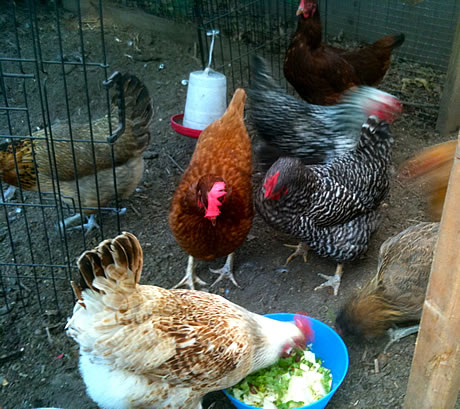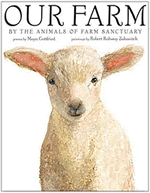The opening line of Wikipedia’s entry on Jainism lays out its high ambitions: “Jainism… prescribes a path of nonviolence towards all living beings. Its philosophy and practice rely mainly on self-effort to progress the soul up the spiritual ladder to divine consciousness.” Vegetarianism is so deeply ingrained in Jainism that its orthodox subscribers do not even eat root vegetables like potatoes and garlic because worms and other organisms are harmed during their excavation.
That means no home fries, homies!
Jainism as faith, and its own brand of vegetarianism, are based on a path of nonviolence, or ahimsa, which means “no harm.” This term has been famously and effectively politicized by the likes of Mahatma Gandhi and Dr. Martin Luther King. Both built movements by invoking a path of nonviolence as a means of protest through civil disobedience.
In the same way that Gandhi and King drew on ahimsa for political movements, Jain immigrants to the U.S. (like my parents) tried to instill in their children a food-related path of nonviolence as well. One can’t fault them for this; it’s very likely that I will also impose some food rules on my children, like not eating at McDonald’s!
Even in India today, it’s somewhat hard to be a vegetarian Jain in modern times. The food production chain in India–from origin to table to mouth–is changing rapidly. New industrial processes are forming: machine manufacturing, refrigeration, organized retail. In India, which is becoming more urban, “eating Jain” is going to become very tough, very expensive, or both.
Being a vegetarian Jain in the United States is, naturally, even more difficult. Only in the last one or two decades have vegetarian options become more mainstream at restaurants. Surely with enough willpower and disgust for meat, anyone can be vegetarian, but most of those folks probably couldn’t go the extra mile to give up root vegetables. Even most Jains in the U.S. admittedly wouldn’t want to give that up.
At age eight, I finally elected to break my faith in a truly American way–at Burger King.
After watching so many friends eat fast food, I was chomping at the bit to get in the game. The irony is that my uncle, who had just immigrated to America, worked at the Burger King. I remember that day: my friend from the neighborhood and I walked down to the BK. My uncle wasn’t working that day; I had finally gotten permission from my folks. I ordered a hamburger. I had a taste of it and finally satisfied my curiosity and appetite. I liked it. The first experiment was a success.
Since that day, I have been a carnivore, but without any dilemma. At that age, the intensity of my curiosity completely outshone any personal, faith-based reservations I had about breaking with tradition. Since the Burger King episode, I have never once wondered if I had made the right decision to venture into carnivorous eating. There was no Carnivore’s Dilemma, even in hindsight. The only regret is that I didn’t start sooner.
I believe that the strictness in Jain vegetarianism propelled me in the opposite direction and made me interested in all types of food. Eventually, over the years, I actually become a cook at a professional level. Since “going carnivore,” I have tasted and/or cooked a wide variety of meats and game: roast bear, alligator, insects, and even a shot of cobra heart in its own blood, like any good Indian would dream of. My exposure to Jainism seeded my curiosity about eating meat, rather than repressing it.
Good, strict religion is excellent for rebellion, right?












